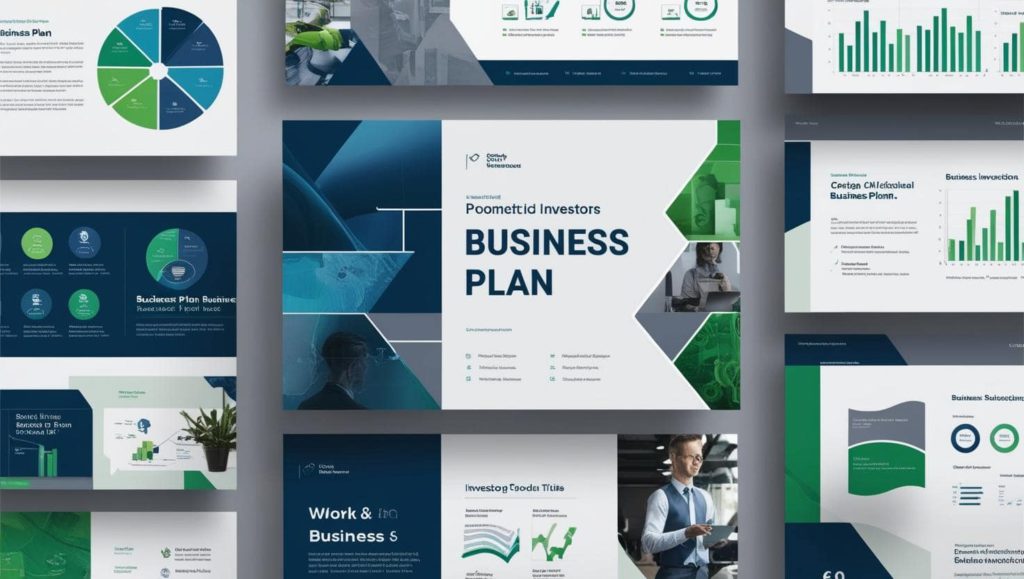Starting a business is an exciting journey, but one of the first and most important steps in that journey is creating a business plan.

A well-crafted business plan serves as a roadmap for your business. Outlining your goals, strategies, financial projections, and how you’ll measure success. While it might sound like creating a business plan requires a hefty investment in time or money, the truth is you can create an effective business plan on a budget without sacrificing quality.
Here’s a step-by-step guide on how to create an impactful business plan on a tight budget.
1. Understand the purpose of a business plan
Before you start, it’s important to understand why a business plan is necessary. A good business plan helps you:
- Clarify your vision: Define your business’s mission, values, and goals.
- Attract investors or lenders: Secure funding by demonstrating your business’s potential for success.
- Outline strategies: Identify how you’ll market your business, reach customers, and manage operations.
- Measure success: Track progress and adjust strategies based on performance metrics.
2. Use free business plan templates and resources
You don’t need to hire an expensive consultant to create a business plan. There are many free resources available online that provide templates and guidelines for crafting a solid plan.
Where to find templates:
- SBA (Small business administration): The SBA offers free business plan templates and resources tailored to small business owners.
- Score.org: Score provides downloadable business plan templates and guides.
- Google Docs and Microsoft Word: Both of these platforms have free business plan templates you can customise to fit your needs.
- LivePlan: Offers a free trial and templates that can help guide you through the business planning process.
Using these resources allows you to avoid starting from scratch, which can save both time and money.
3. Focus on the key elements of a business plan
A typical business plan includes several sections, but you can keep it concise and still effective by focusing on the essential components:
Executive summary
- This is a brief overview of your business, including your mission statement, goals, and key products or services.
- Keep it to 1-2 pages, but make it compelling and clear.
Business description
- Describe what your business does, who your target market is, and how you plan to meet their needs.
- Highlight what makes your business unique and why customers will choose you over competitors.
Market research and analysis
- Conduct basic research on your target market, industry trends, and competitors.
- You can find free market research online (e.g., government databases, trade associations, or industry reports).
- Use free tools like Google Trends or U.S. Census Data to gather demographic and market information.
Organisation and management
- Outline your business structure (sole proprietorship, LLC, corporation) and introduce your team (if applicable).
- If you don’t have a large team, focus on your role and any partners or key employees.
Marketing and sales strategy
- Define your marketing approach—how will you reach your target audience?
- Discuss your online presence (website, social media), and cost-effective marketing strategies (content marketing, social media campaigns, or email marketing).
- Focus on free or low-cost marketing channels that you can handle yourself, like social media or word-of-mouth referrals.
Financial projections
- You don’t need an accountant to create a basic financial plan. You can use free or low-cost tools like Google Sheets or Excel to create financial projections.
- Include sales forecasts, expenses, and break-even analysis.
- There are also online resources, such as QuickBooks or Wave Accounting, that provide free accounting tools and templates to help you keep track of your finances.
4. Do your own research and avoid expensive consultants
Instead of paying for market research reports or hiring expensive consultants, you can do much of the research yourself. Here are a few ways to gather data on your industry and competitors without spending a lot of money:
- Use free online tools: Tools like Google Keyword Planner, Answer the Public, or Ubersuggest can help you understand what potential customers are searching for in your industry. This information can guide your marketing and product development.
- Network locally: Attend free networking events or use social media to talk to others in your industry and gain insights.
- Competitor analysis: Study your competitors’ websites, social media, customer reviews, and other publicly available information to understand what works for them.
5. Use free or low-cost software
You don’t need high-end software to create a business plan. There are free or affordable tools that can help with document creation, financial projections, and marketing strategies.
- Google Docs and Sheets: These free tools allow you to write, collaborate, and manage your business plan without the cost of software like Microsoft Office.
- Trello or Asana: Use these free tools for project management and to keep track of your business goals, deadlines, and tasks.
- Canva: This free tool can help you create visually appealing business plan presentations, charts, and graphics to accompany your document.
6. Focus on clarity over length
A business plan doesn’t need to be hundreds of pages long to be effective. In fact, most investors and lenders prefer concise, clear plans that get to the point. Focus on the most important details and avoid unnecessary fluff.
- Be clear and specific: Your business plan should focus on what matters most, such as your goals, how you’ll achieve them, and how you’ll make money.
- Highlight key points: Break the information into clear sections with bullet points or headings, so the reader can easily skim and understand the core message.
7. Regularly update your business plan
Your business plan isn’t a one-time document. It’s a living guide that should evolve as your business grows. Set a regular schedule to review and update your plan to reflect any changes in your market, business strategies, or financial situation. Regular updates help you stay on track and adjust your approach as needed without spending more money on professional services.
8. Seek feedback and advice from free resources
While you may not have the budget to hire consultants, you can still seek feedback and advice from free resources:
- Mentorship programs: Organisations like SCORE or Small Business Development Centres (SBDCs) offer free business mentoring.
- Online communities: Join online forums, Facebook groups, or LinkedIn communities where you can ask questions and get feedback from other entrepreneurs.
Creating a business plan on a budget is entirely possible by leveraging free tools, templates, and resources available online. By focusing on the key components—like your business description, market analysis, marketing strategies, and financial projections—you can build a solid, effective plan. Without the need for expensive consultants.



